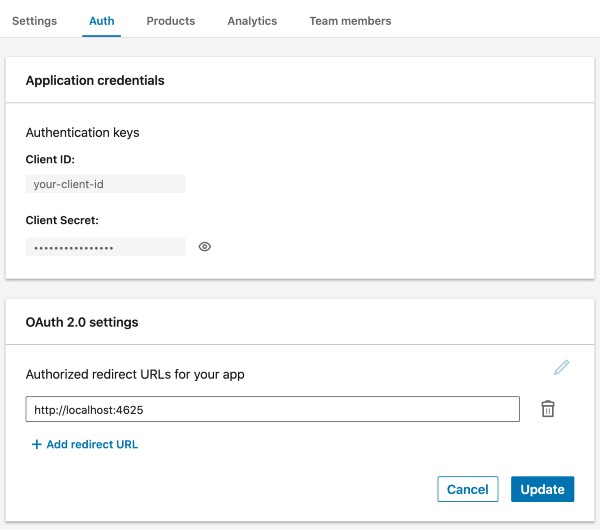linkedin-cli
Linkedin command line interface (cli) is a python 3 console application to handle authentication and communication with LinkedIn API v2.
Linkedin-cli requires a linkedin application client id and client secret to authenticate a user on the linkedin api v2. Create a linkedin application on linkedin developer site if you don’t have already.
Follow tigillo on linkedin for the latest updates.
Requirements
python 3
Installation
python3 -m pip install linkedin-cli
Running
python3 -m linkedin
Usage
usage: linkedin <command> [<args?]
These are common linkedin commands used in various situations:
config Get and set linkedin-cli options
login Login with a user for api access
me Display logged in user details
post Share a post
Other commands
help Print help (this message)
version Print the version information
Configure Linkedin Application
Run below command and provide your client id and secret of your linkedin application. Configuration will be saved to ~/.linkedin/config.json file.
linkedin configure set application
Linkedin Application Configuration
Go to `auth` page of your linkedin application and add `http://localhost:4625` address as the `Authorized redirect URLs for your app` on the *OAuth 2.0 settings* section.

Login
Run below command and authenticate your linkedin application for your user on the opened web dialog. Once approved your api token will be stored to ~/.linkedin/config.json file.
linkedin login
Share a Post
Put content between double quotes, new lines supported. Only text content supported currently.
linkedin post "Hello connections!
Sent from my terminal via linkedin-cli"
Post Visibility
Default visibility option for post command is connections. Visibility option can be set as connections or public.
linkedin post -v public "Hello world!
Sent from my terminal via linkedin-cli"
Build
python3 setup.py build